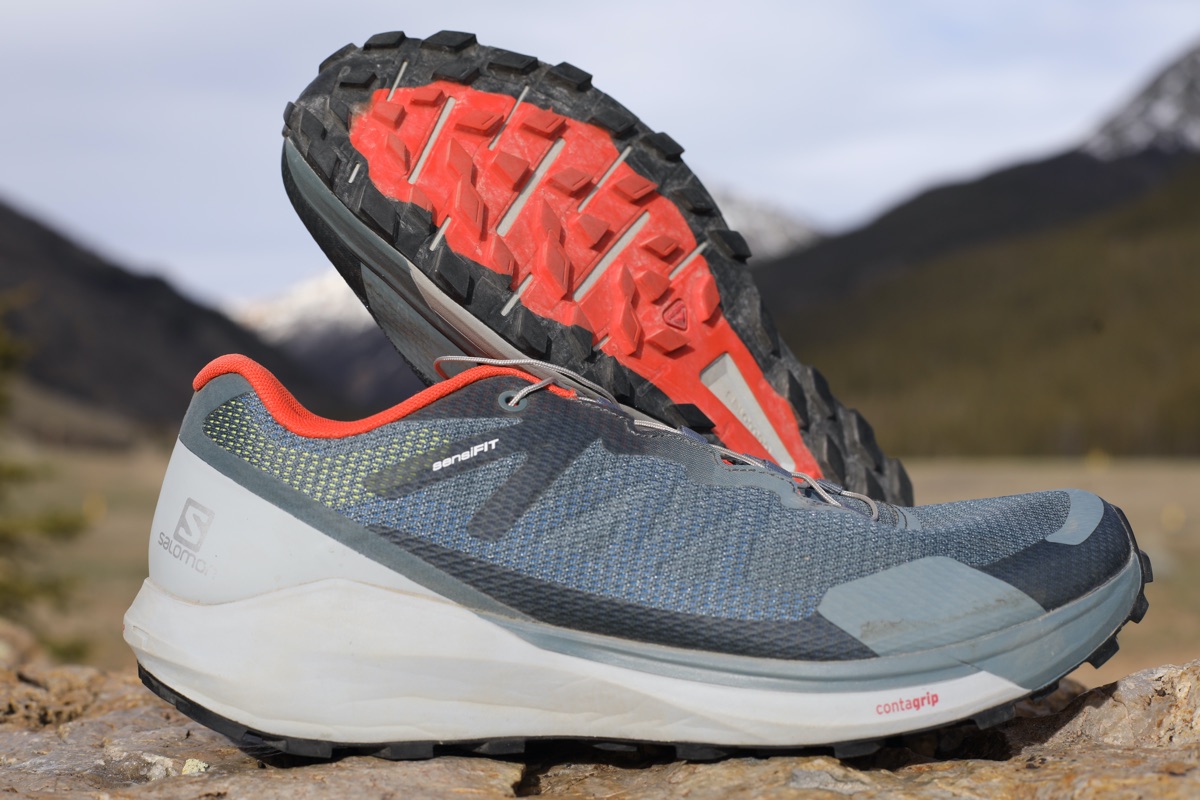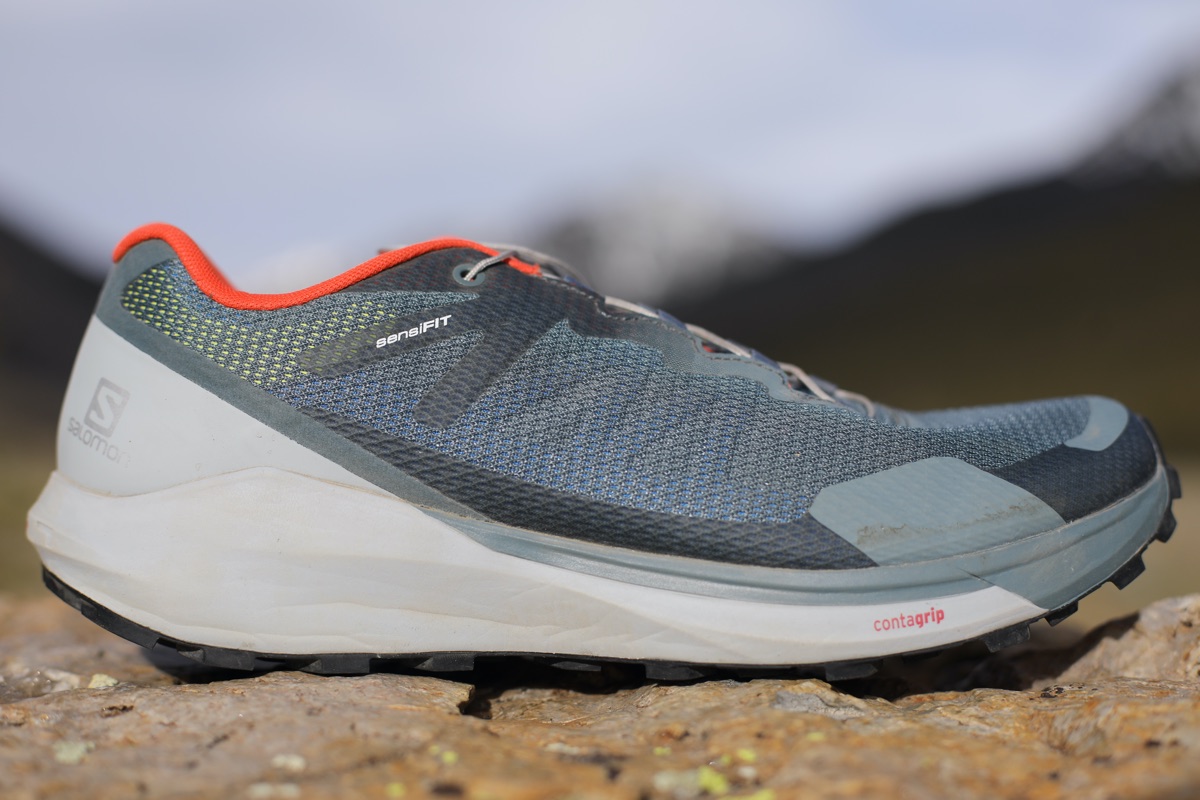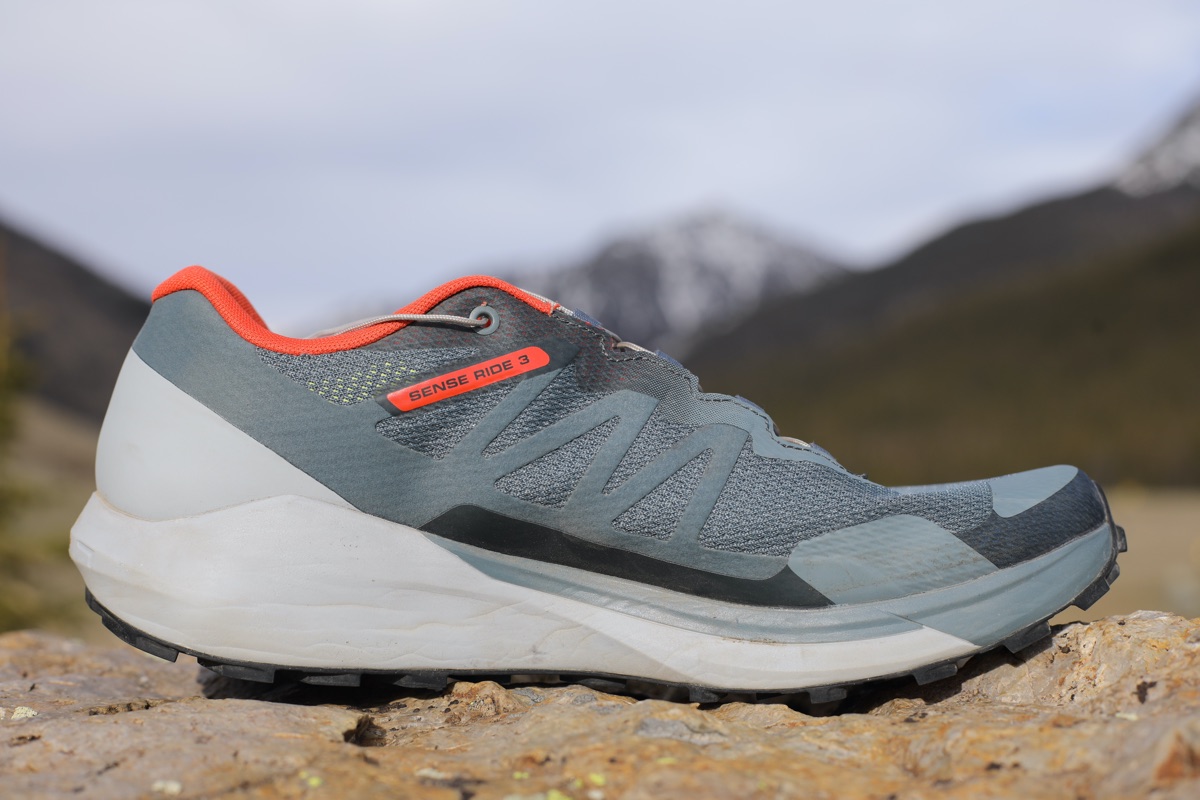For the latest on the Salomon Sense Ride, check out our Salomon Sense Ride 5 review.
Our Favorite Trail Running Shoes
Check out our Best Trail Running Shoes article to learn about our current favorite trail running shoes!
Salomon Sense Ride 3 Review
When looking for an all-around trail running shoe that can handle smooth surfaces such as sections of pavement and buffed-out trail as well as technical mountain terrain, there are few options on the market. Typically, my favorite shoes for smooth trails suffer in steep or loose terrain and vice versa. This has always made shoe selection for racing quite confusing as well, and as someone who really doesn’t like changing shoes during an ultramarathon, I find that having a competent all-arounder is one of the only things that I’m in control of come race day.
The Salomon Sense Ride debuted in 2017 and looked to be the sweet spot for runners who couldn’t quite handle the narrow fit and firm/minimal cushioning of an S-Lab shoe, but wanted the same sort of nimble feel on technical trails. The first version of the Sense Ride featured a narrow-forefoot fit that quickly ruled it out as an option for anyone with a wider forefoot. The second version improved the fit, but the Vibe cushioning seemed to go flat after about 100 miles in the shoe. In the Salomon Sense Ride 3 ($120), the brand employs its new Optivibe midsole foam which really improves the fit and transition of this shoe, making it one of my favorite shoes of 2020.
Salomon Sense Ride 3 Upper
This upper has a softer and more malleable feel than its predecessors and is primarily made of tough, anti-debris mesh. Salomon’s Endofit/Sensifit technologies are very evident in this shoe particularly, and the initial feel of sliding these shoes on reminds me of the S-Lab Ultra which costs $60 more. There is a great feeling of lockdown with the Ride 3 and I never had any issues with my foot sliding around or friction blisters. Welded-on overlays reinforce the toecap and rand of the shoe, but are otherwise fairly minimal despite this shoe’s durability. Per usual, Salomon’s Quicklace technology is very easy to use and seems to last through a lot of abuse thanks to Kevlar laces. I especially appreciated the tongue on the Ride 3 as it never wrinkled or buckled or really required any re-adjusting while out on the trail. I could tighten the Sense Ride 3 for a greater locked-down feel on technical downhills or keep the shoe relatively loose if I was running roads.
While semi-flexible, the heel cup of the Sense Ride 3 does feel very built up, especially when first trying on the shoe. This built-up feeling in the heel is primarily due to the midsole, and more on that to come in the midsole portion of this review. The heel collar is soft and well padded, and in conjunction with the gusseted tongue and lacing system, there is very little debris that gets into this shoe. With the thickness and durability of the mesh also comes the feeling of locked in heat and moisture. My feet did not dry out after creek crossings and even after runs where my feet would sweat a great deal in the shoe, it still took an overnight for the shoe to dry out in the arid climate where I live.
A note on fit, over the last several years, the only Salomon shoe that I’ve been able to use for an ultra distance rather than a shorter training run has been the S-Lab Ultra. The Sense Ride 3 features an accommodating toebox which is enough for my bunion-riddled forefeet and some toe splay.
Salomon Sense Ride 3 Midsole
Optivibe is Salomon’s updated take on the Vibe midsole which debuted in the original Sense Ride shoe. The functional aim of the Optivibe foam is to reduce vibrations and muscle fatigue while providing an energy-returning ride. While the Vibe midsole foam seemed to feel a bit too firm for my liking, the full-length Optivibe midsole material used in the Sense Ride 3 is a pleasure to experience. The ride is still very responsive and protective, but this is the softest-feeling midsole I’ve run in from Salomon. To be fair, the Sense 4 Pro also uses a full-length Optivibe midsole, and you can read iRunFar’s thorough review by gear tester Craig Randall.
With an 8mm heel drop (25mm heel to 17mm forefoot), one wouldn’t expect too much of a difference in the transition and ride from older versions of the Sense Ride. However, when you first try on the Sense Ride 3, the shape of the heel and midsole foam is chunky and definitely noticeable. This took some time for me to get used to and I would say that it does have the feel of a stability shoe, but with a neutral ride. Additionally, the shape of the midsole does benefit heel strikers more so than forefoot strikers. I found that descending in the Sense Ride 3 to be very smooth due to the heel-toe transition of the midsole. Road running in this shoe is also palatable, and it makes for a great door-to-trail option.
Salomon Sense Ride 3 Outsole
For runners familiar with Salomon trail shoes, the combination of a Profeel Film rockplate and a Contagrip outsole will be very familiar. The Profeel Film offers great protection while also maintaining great ground feel. The Contagrip outsole continues to perform as the industry standard for a low lugged, sticky, all-around outsole, and it performed well on loose and steep mountain terrain as well as hardpacked and muddy trails. Wear on the pair I tested is non-existent to minimal and, consistent with the rest of the shoe, I expect it to last and perform well for at least 500 miles.
Salomon Sense Ride 3 Overall Impressions
The Salomon Sense Ride 3 is a great all-arounder, a shoe that you can put on and forget about regardless of the terrain or distance. That being said, there are some drawbacks and considerations in the design of this shoe. All of the protection and durability that the Sense Ride 3 offers comes at a cost, and a women’s size 8 weighs 10 ounces and men’s size 9 weighs in at 10.5 oz. That being said, the shoe doesn’t feel heavy and it performs well in technical and rocky terrain, both ascending and descending. But, the weight means that it is a shoe I would more likely reach for in a 100 miler rather than a 50k.
If you’re someone who has eschewed Salomon trail running shoes based on their narrow fit and last, I would encourage you to check out the Sense Ride 3s. The fit will please a broader audience and they do seem to break in the more I wore them. While I wasn’t overly impressed during my first few runs, the shoe seemed to really break in around 50 miles and get better and better. I am still appreciating the utilitarian nature of the shoes and when I’m headed out of town for the weekend these are my go-to trail running, hiking, road running shoes.
Other Versions of the Salomon Sense Ride 3
While we reviewed the men’s Sense Ride 3 in this article, be sure to also check out the Salomon Sense Ride 3 women’s version.
Also, you might be interested in the waterproof edition of this shoe: the Salomon Sense Ride 3 GTX men’s version and Salomon Sense Ride 3 GTX women’s version.
Call for Comments
- Do you run in the Salomon Sense Ride 3? If so, can you share your thoughts on the shoe?
- Have you run in multiple versions of the Sense Ride? If so, what similarities and differences do you find in this version three?
[Editor’s Note: If you’re affiliated (i.e., an employee, ambassador, etc.) with a brand, please share your relation in each of your comments on this article. Thanks!]




